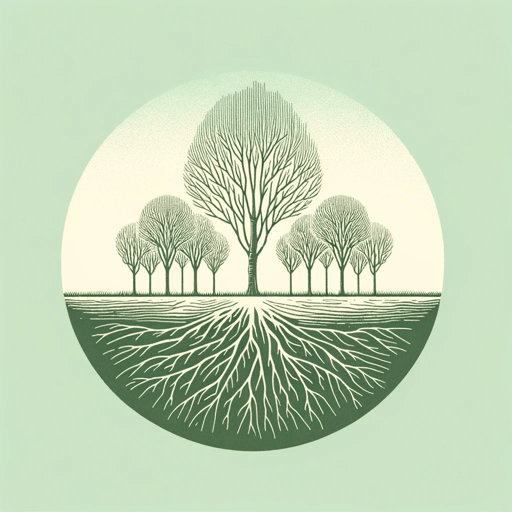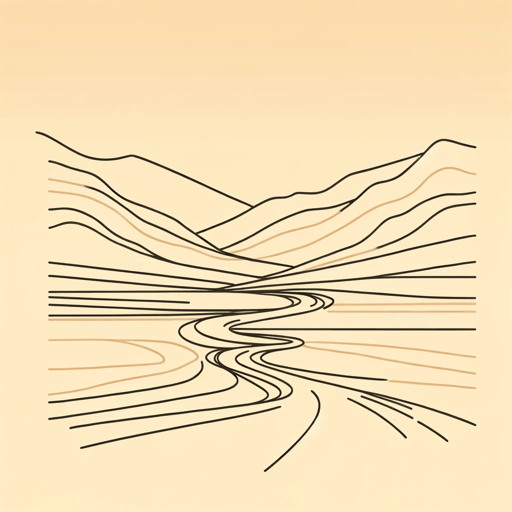60 pages • 2 hours read
Luis Alberto UrreaThe Hummingbird's Daughter
Fiction | Novel | Adult | Published in 2005A modern alternative to SparkNotes and CliffsNotes, SuperSummary offers high-quality Study Guides with detailed chapter summaries and analysis of major themes, characters, and more.
Summary and Study Guide
Overview
Written by Luis Alberto Urrea in 2005, The Hummingbird’s Daughter is a fictional account of the life of Teresa Urrea, a woman whose mystical powers and religious fervor earned her the reputation of a living saint in the late 1800s and early 1900s. Luis Alberto Urrea is a distant cousin of Teresa and grew up hearing about her. He eventually researched her life through his family connections and the communities that she helped. The novel is a work of magical realism that demonstrates how Catholic and Indigenous spirituality coexist in Mexican culture. The story also uses the harsh treatment of Indigenous people and the violation of their land rights at the hands of Mexican President Porfirio Díaz’s regime to contextualize the power of Teresa Urrea’s message. The Hummingbird’s Daughter won the 2006 Kiriyama Pacific Rim Prize. Its sequel, Queen of America, follows Teresa’s journey to start a life in the United States.
This guide refers to the Back Bay paperback edition that was originally produced in 2006.
Content Warning: Both the source material and this guide contain depictions of child abuse, violence against Indigenous people, violence against women, and the violent actions of an oppressive political regime, including several scenes of mass murder. The source text sometimes employs outdated and potentially offensive language concerning Indigenous people, which this guide reproduces only in direct quotations.
Plot Summary
The story begins in Sinaloa, on the ranch belonging to Tomás Urrea. A woman named Cayetana Chávez, who is also known as la Semalú (the Hummingbird), gives birth to Tomás’s daughter. Her delivery is aided by Huila, the ranch’s healer, midwife, and spiritual guide. Tomás and his wife, Loreto, live in the big house on the ranch and entertain Tomás’s friend, the engineer Lauro Aguirre. Cayetana names her daughter Rebecca. Two years pass. Cayetana does not love motherhood and is exhausted by the demands of an infant. One day, when Lieutenant Enríquez, a friend of Tomás, visits the ranch carrying the head of a bandit that she recognizes, Cayetana leaves her child with her sister and never returns.
Years pass. One day, a healer and midwife named Huila recognizes Rebecca on the ranch and addresses her as such, but the child corrects her. The girl is now Teresa and goes by Teresita. She loves God as much as the saint of the same name. Huila tells Teresita that she does not look like she is of “the People” (the Indigenous community), and Teresita is offended by this idea. One day, Teresita meets a young boy named Buenaventura. He claims that Tomás is his father but is unaware of the fact.
Wanting to know more about her own identity, Teresita follows Tomás into the big house, looking for Huila. Tomás is patient and kind to her, despite the fact that she is not allowed in the house; he takes her to Huila. When Teresita returns home, her mother’s sister, whom she calls Tía, beats her and throws her in the pig pen as punishment for venturing into the big house. Buenaventura picks Teresita up that night and brings her to Huila. While the girl sits with Huila, Tomás’s wife, Loreto, joins them and recognizes that Teresita is an Urrea. Meanwhile, Huila sees power in Teresita and recognizes that she may have the same spiritual gifts that Huila does.
Huila brings Teresita home in the morning and scares Tía over her treatment of Teresita. Huila also begins educating Teresita in matters of spirituality and the healing properties of plants. However, the political situation in Mexico under President Díaz soon turns volatile, and after conferring with his friend Aguirre, Tomás decides to move the ranch north to Sonora to protect his family.
Loreto and the children go to the city of Alamos, and Tomás and the People go to the ranch of Cabora. On the way, Tomás’s group is caught up in a fervent gathering of pilgrims, who are flocking to hear the message of the messianic figure of Niño Chepito. He is a child who claims to be God and promises the death of white men. Huila recognizes him as a fraud, and though some, like Tía, choose to stay with him, the rest move on.
When Tomás’s group arrives at Cabora, they find the ranch burned and strewn with bodies. The injured survivors live across the land. They tell Tomás that a local Indigenous group called the Yaquis attacked the ranch out of hunger. Tomás commits to rebuilding the ranch, and as Aguirre begins leading the reconstruction, Tomás searches for the Yaquis, wanting to make peace. While he is away, Huila continues Teresita’s spiritual education, but Teresita struggles to accept the presence of unexplained mysteries in the world.
Teresita convinces Aguirre to teach her how to read and write, and as she begins her instructions, Tomás returns with the Yaquis in tow. The Yaqui leader tells the People that they attacked the ranch out of hunger and because they believed that they were at war with the people of the ranch. They show evidence of the abuses that the Mexican army inflicted upon them, and Tomás announces that Cabora will give the Yaquis a percentage of the crops in exchange for peace and protection.
The years go on, and Huila notices Teresita maturing. Worried about her power, Huila sends her to the nearby satellite ranch of Aquihuiquichi. There, Teresita realizes her abilities to help with births and begins earning renown among the People. When Huila visits her and asks if this is what she wants to do with her life, Teresita says no; she really wants to help ease suffering. Huila announces that they will have to find a new teacher for her, one who is more attuned to this new land.
Tomás visits his family in Alamos once a month. One morning, as he prepares to leave, Segundo, his foreman, brings Buenaventura to him and reveals that the boy is Tomás’s son. Tomás brings Buenaventura with him to Alamos and admits his infidelity to Loreto. They fight, and she declares their separation, which is just short of a divorce. Tomás blames Buenaventura for this development and ignores him on the way home. On their journey back to Cabora, they stop at the restaurant of a man named Cantúa, and Tomás falls in love with the proprietor’s daughter, Gabriela.
Meanwhile, Huila brings Teresita to Manuelito, who is a healer and spiritual guide like Huila. Manuelito is from Sonora. He teaches Teresita about many new plants and ideas. When Teresita returns to Aquihuiquichi with her new knowledge, she helps many women. However, after witnessing the death of a woman in childbirth, she retreats into herself. Buenaventura visits her; he has been exiled to Aquihuiquichi due to Tomás’s rage at him. Buenaventura tells Teresita that she, like him, is the son of Tomás.
Teresita returns to Cabora to confront Tomás, but before she can, Loreto arrives and fights with Tomás over their marriage. Amid this fight, Buenaventura announces that Teresita is also Tomás’s child, and everyone storms out except Teresita and Tomás. They begin a new life together, and Tomás invites Teresita to live with him in the big house, where he teaches her how to live as a part of his social class. Teresita becomes friends with Gabriela and invites her to stay the night often. Tomás finally makes a proposal to Gabriela’s father, who agrees, and Gabriela, who is in love with Tomás, comes and lives at Cabora. When Loreto finds out and once again confronts Tomás, he tells her that he will divorce her if she ever comes back to Cabora.
Teresita’s powers begin to grow, and she is able to help ease people’s pain through the touch of her hands. Buenaventura grows jealous of her popularity among the People and of her preferential status in Tomás’s house. When he mocks the children that she plays with, Teresita throws her hand up and yells for him to stop. He immediately suffers a seizure, and it takes Huila the entire night to stabilize him. Tomás forbids Teresita from using her powers again.
Huila grows old and rises later each morning, so Teresita journeys alone to their special grove on one particular morning. While Teresita is gone, Huila collapses, and the entire ranch descends into a panic at the holy woman’s fall. As this happens, a man named Millán is following Teresita into her grove. He attacks her and leaves her for dead. Her family finds her, and after spending 13 days in a coma, Teresita dies. While she is dead, Teresita dreams of meeting the Virgin Mother and God, who give her a gift and send her back. After four days of funeral preparations, she wakes again. She then goes to visit the dying Huila and helps her to pass on. The ranch buries Huila, and Teresita acts strangely, speaking nonsense and healing people who have grave wounds. As word spreads of her story, pilgrims descend on Cabora. She accepts these people and heals all who come forward.
Cruz Chávez, the self-proclaimed Pope of Mexico and leader of Tomóchic, comes to the ranch to test Teresita’s miraculous healing abilities and is impressed when he meets her. He pledges his and his community’s allegiance to her. They grow close, depending on each other for advice, though they disagree on important issues. Cruz is militant and is willing to fight the government to protect Indigenous people, while Teresita preaches for love and non-violence and frequently encourages Cruz to harm no one.
The government soon hears of Teresita and her pilgrims and sees her as a threat, believing that her advocacy for Indigenous rights and her strong following may lead to a revolt. The government begins applying pressure to her and Tomás through Lieutenant Enríquez, a friend of Tomás. Even in the face of these threats, Teresita refuses to stop her work. When Enríquez finally informs Tomás that he must arrest Teresita, he gives her and Tomás three hours before he begins to pursue them. They make it to Aquihuiquichi before being taken.
Tomás and Teresita arrive at a prison in Guaymas and are held for an extended period, during which Teresita is abused and lives in squalor. She develops a fever and hallucinates conversations with Cruz, in which he shows her the burning of Tomóchic and warns her that her supporters are coming. When she and Tomás are brought out of prison, they both assume that they are to be executed. However, they are surprised to be put on a train, where Enríquez tells them that President Díaz is deporting them to the United States. He informs them that it is really a plan to bring about Teresita’s death, as Díaz hopes that her supporters will attack the train and that she will perish in the resulting violence.
Teresita faints, and in her dreams on the train, she sees Huila, who tells her that she must choose her own future. When she wakes, she convinces Enríquez to stop the train in Ambush Canyon, where her supporters wait. She steps onto the open platform as they arrive and tells her supporters not to devolve into violence. to leave them be. She declares that she is choosing to go to the US. They let the train pass.
Related Titles
By Luis Alberto Urrea





